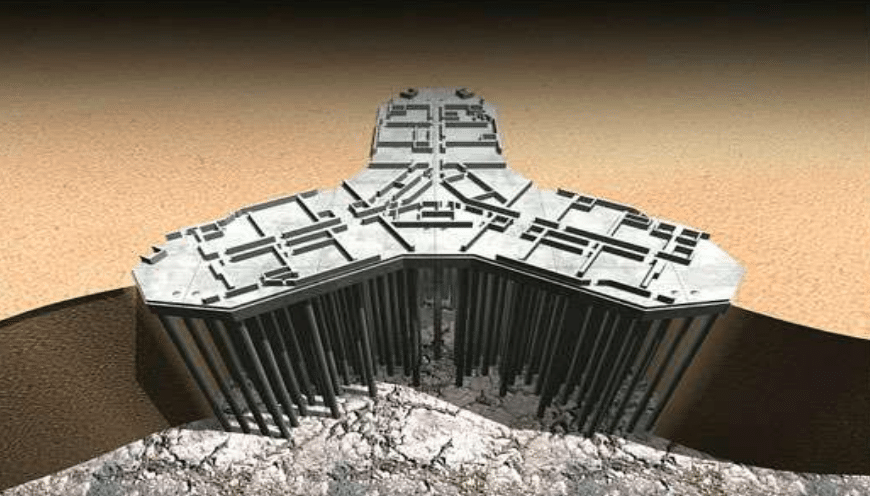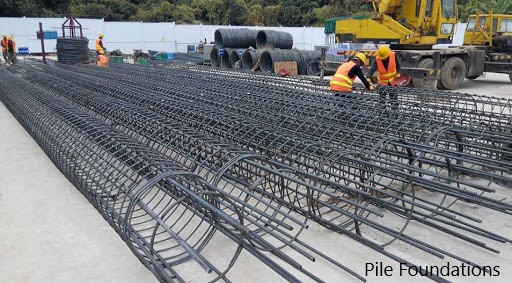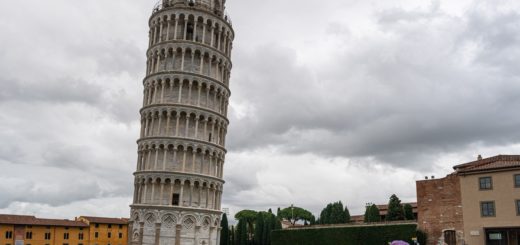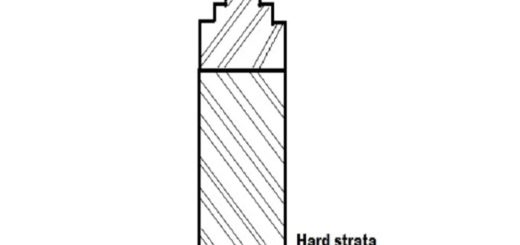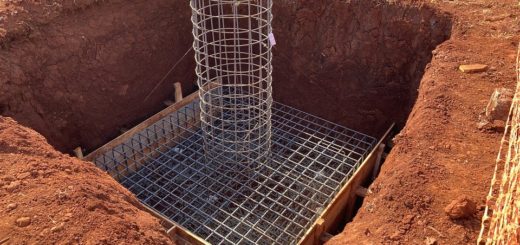Purpose of Foundation | Structural Guide
The purpose of foundation can be discussed in different areas. Firstly, let’s see what the foundation is.
What is foundation
It is a structural element that transfers the superstructure loads to the ground using vertical reaction or horizontal reaction based on the nature of the loads applied to it.
There are many types of foundations. However, they mainly can be categorized into two types.
- Shallow Foundations
The foundations constructed at a shallower depth are called shallow foundations. Small individual foundations or placing the foundation in the whole area will be done.
Pad footing, combined footing, strip footing, raft foundations, etc. are some examples of shallow foundations.
- Deep Foundations
Deep foundations are constructed when the structure cannot be constructed on the shallow foundations due to the very high loads applied from the structure, having low bearing capacity of the soil, having weak ground conditions that we can not build a shallow foundation, etc.
Pile foundations such as cast-in-situ bored piles, driven piles, micro piles, diaphragm walls, etc. are some examples of deep foundations.
Purpose of Foundation
Let’s discuss what is the purpose of the foundation. Why we build a foundation is structures.
The structure has two components namely, superstructure and substructure. Generally, the substructure is identified as the foundation of the structure.
The main purpose of foundation construction can be listed as follows.
- Safely Load Transfer
The prime purpose of the foundation is to transfer the weight of the superstructure to the ground safely without failure. There will be different types of loads applied to the structure. They need to be transferred to the ground without any effect on the superstructure.
The dead weight of the structure, live loads on the structure, other verticals loads on the structures, wind loads applied on the structure as lateral loads, earthquake loads applied on the structure as both vertical and horizontal loads, other accidental loads, etc. shall be transferred to the ground without any structural failure or without violating the serviceability requirements.
- Maintain the Structure with the Serviceability Limit State
When the lateral loads are applied to the structure, induced deflections need to be controlled. They shall be within the allowable limits.
For buildings, we maintain the story drift and total deflections at certain levels for serviceability. Though the building is having good lateral load resisting systems, if the foundation moves laterally with the application of lateral loads, these deflections will be higher. Therefore, the foundation should have adequate stiffeners to maintain the structure within the serviceability limit.
- Avoid Differential Settlement
Having different settlement in the foundations affect the superstructure and its other components such as brick walls, partition walls, another embedment, etc. If this settlement is significant, it could affect the structural stability too.
Foundation shall be designed to resist such movement if any. This movement could be due to the incorrect sizing of footings or due to the condition of the ground.
If the pressure under the foundation is the same as all the foundations resting on the same soil, the settlement will be nearly the same. Then there will not be a different settlement.
Contractions, expansion or movement of the soil could lead to the differential settlements. Those actions need to be addressed during the design. Having strong tie beam systems and designing the foundation for such movement could be done.
Related Articles for Foundations
- Combined Footing
- Spread Footing
- Shallow Foundations
- Pier Foundation
- Footing Foundations
- Deep Foundations
- Foundation Failure
- Underpinning
- Eccentrically Loaded Foundations
- Shallow Foundation Failure
- Pile Raft Foundations
- Mat Foundation
- Pile Foundation
- Driven Pile Foundations
- Pile foundations
- Uplift Pressure on Foundations
- How to Determine Foundation Type
- Excavation for Foundation
- Foundation Waterproofing
- Settlement of Shallow Foundations
- Slab Foundations

